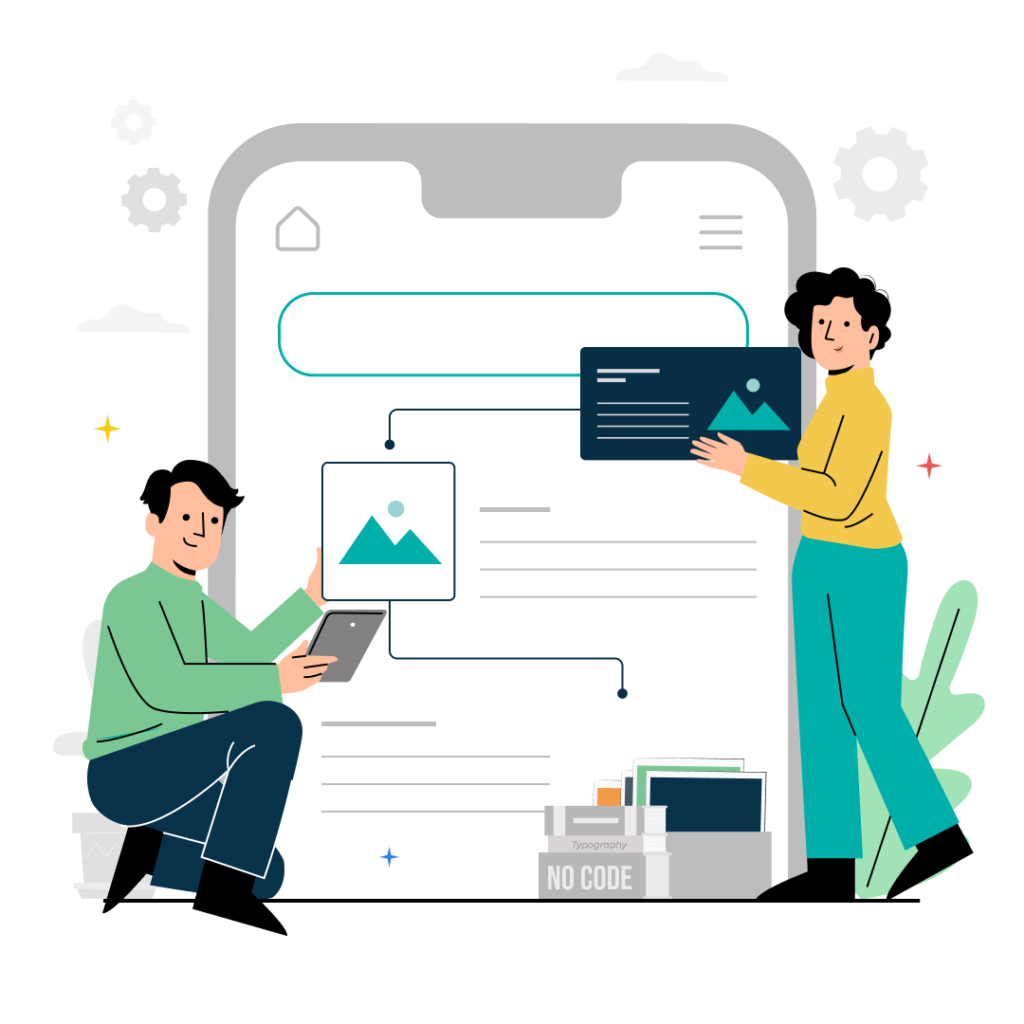This is a quick rundown to help you choose the best no code/low code tool to start building your MVP and the best strategy to follow.
To keep it simple we’re just going to call them no code tools. No code tools can be divided into 3 main categories – workflow automation for business/enterprise, website builders, and app builders. We’re going to focus on app builders.
The best no code tools for building apps
After running through hundreds of pages of documentation and community forum posts as well as days worth of tutorials, these are the app builders we would recommend:
None are perfect. They all have their own unique pain points. But they all follow a similar model for structuring an app. If the functionality that your MVP requires can fit within that structure you will have little trouble producing a working prototype in weeks instead of months.
The glaring limitation of no code tools
Here is the main reason why no code tools are best used for building prototypes and MVPs and why you will eventually turn to or integrate custom code as your app matures:
No code tools focus on the lowest common functionality, abbreviated as CRUD.
CRUD stands for “Create, Read, Update, Delete”, which are the four operations you can perform on a database, which is where your app is going to store any data.
How this looks in an app like a marketplace:
- Users CREATE a new item to sell in a marketplace
- Users browse – READ – items available to bid on in a marketplace.
- The current highest bid on an item is UPDATEd when it is made.
- If the seller abandons the auction the item is DELETED.
UX limitations of no code tools
No code tools are further limited in that the interfaces you can build with them tend to be restricted to displaying: 1) static pages, 2) a list of items pulled from a database (like a list of homes for sale in the suburb of Erinsborough), and 3) a detailed view of a single item pulled from a database (like that home on 24 Ramsay Street).
They’re basic standard views. Exactly what you would use in a prototype to make sure you’re pulling the data you expect. While they can be designed and tailored for your app and brand, your UX is still being decided for you.
If you find this too limiting you will need to look towards more advanced no code tools that allow you to also do low coding (or even full coding) like FlutterFlow or Draftbit. But should you code portions of your app from scratch? Do you have the inhouse skills? Can you hire someone who is familiar with your tool of choice?
Obviously, for an MVP, the decision to expand from no code to low code will delay launch and should be considered carefully. Once you start coding your options become unlimited, but so does the time it will take to finish your app unless you have access to the talent to write the code and the discipline to manage your feature list.
The two no code strategies – Build to throw away / Build to keep
If you want to validate your product market fit as quickly as possible, then you can build your MVP using a no code tool with the intention to throw it away and rebuild later from scratch when you have found product market fit.
This gives you the speed of a no code tool. That speed makes it easier to avoid the sunk cost fallacy so you feel okay throwing it away and starting again from scratch using proper tools and a proper framework.
“Throwing it away” isn’t literal. You’ll keep it running while you build the next version.
If you already have users and a market and want to provide an app, then you want to use a tool that allows you to continue to grow your app’s functionality beyond what the drag and drop interface provides. You want to build to keep.
If you want to build to keep make sure you choose a tool that gives you the features you need to implement the complete product you envision. No code tools are simple because they are often limited.
To avoid these limitations you will want to use a no code tool that lets you export the code for your app. See the end of the article to see which tools allow this.

Which no code tool gives you the best chance for success?
Success depends on finishing your app and getting it into the marketplace. Your best chance for success depends on matching the no code tool to your technical expertise. Here is what we would recommend for different levels of programming ability. Choose the one that best describes you:
- Excel power user – Adalo
- Designer who leans tech – Bravo Studio
- Has some understanding of coding -Thunkable
- Writes the occasional script – Draftbit or Flutterflow
- Software developer – Draftbit, Flutterflow or Backendless
Of course there’s nothing stopping you from using a less complicated no code tool. It might give you a speed advantage.
Comparing the no code tools mentioned in this article
Like all options in a crowded marketplace, every choice has its trade offs. This table summarises what we think are the main factors that should guide your decision on choosing a no code tool.
No code may be all the code you need
No code tools continue to add features (like integrating third party APIs) as they compete with each other. What can be built with no code tools today couldn’t be built a year ago.
But don’t let possibility fool you into making your MVP more complex than it needs to be to launch. If you can work within the standard set of CRUD actions combined with list and detail views (which 9X% of apps can) then you will be able to get your MVP to launch with any one of the tools we discuss.
As your experience with no code tools and your understanding of your app grows, you might find it worthwhile to move up to the more powerful no code tools on the next iteration. Combined with a no code backend, you may be able to delay the transition to bespoke code until revenues are high enough to make cutting platform costs worth the investment.
Whatever path you take to build your MVP with no code tools, it’s sure to be shorter than the alternatives.



















